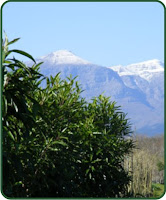Rudi’s pure-bred Jack Russells have just produced a litter of 8 gorgeous puppies! The 4 females and 4 males were born on the 12th of June and are all very healthy and lively – each a mirror of their parents who are both so full of character!
The puppies are available for R 1000.00 each to potential animal lovers who have large properties and whom we know will give these special little souls lots of attention and love. The puppies are not registered however they will all be de-wormed and inoculated with booklets provided when they are ready to go to their new homes. To come and view your puppy, please contact Rudi on 082 829 5543, or 021 873 3710.
The puppies are available for R 1000.00 each to potential animal lovers who have large properties and whom we know will give these special little souls lots of attention and love. The puppies are not registered however they will all be de-wormed and inoculated with booklets provided when they are ready to go to their new homes. To come and view your puppy, please contact Rudi on 082 829 5543, or 021 873 3710.
Mum and the Pups...
A litter of 8 very happy little puppies...





